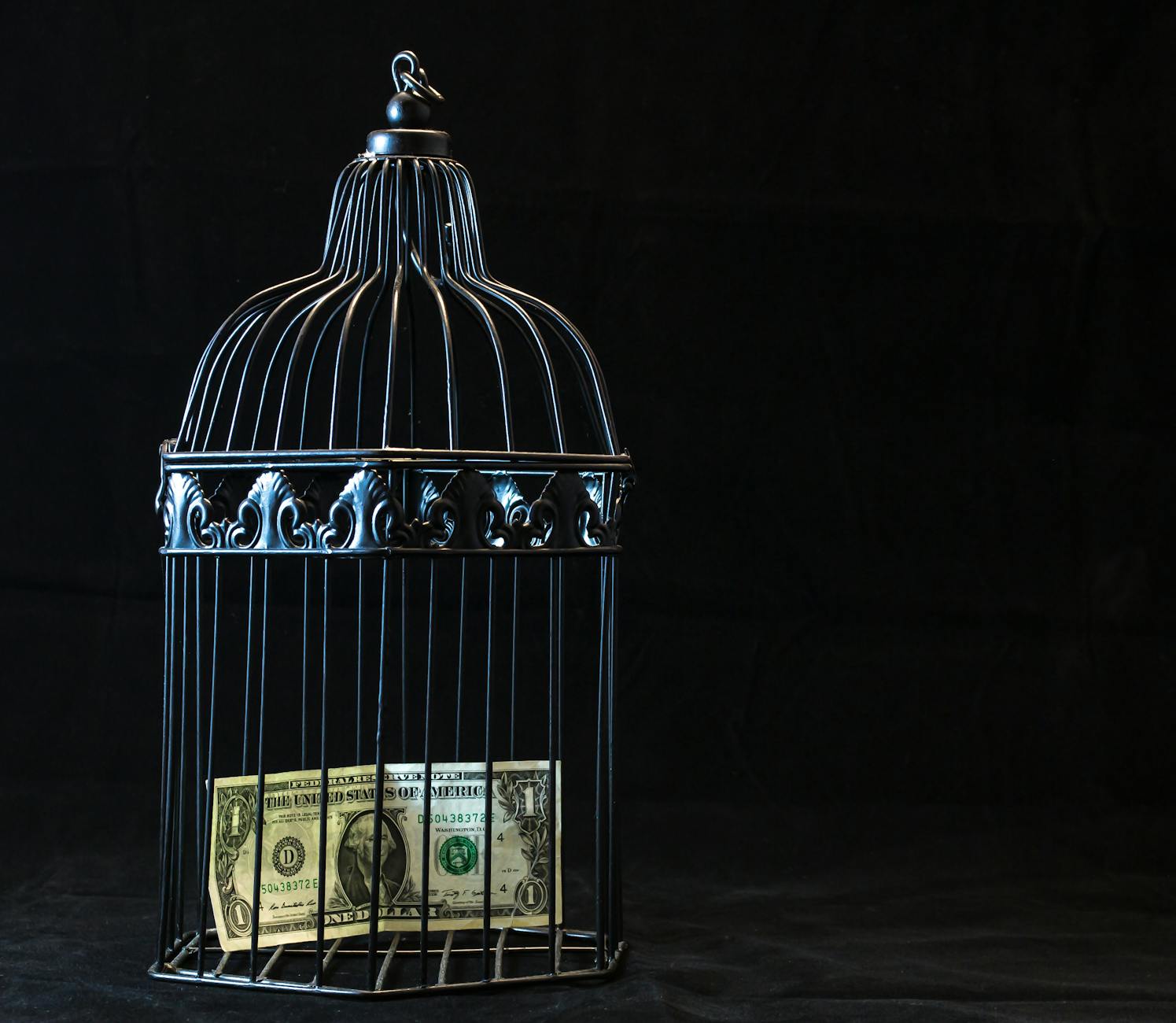Ever heard someone say you should never use credit cards or that only the rich invest? Money myths spread faster than bad Wi-Fi at a budget hotel. They sound simple until life turns them upside down.
Real-life experiments can shake these myths and put old advice to the test. Nobody’s budget is perfect, and sometimes “never” or “always” is just wishful thinking. We’re tossing out the theory and rolling up our sleeves—because that’s where things get interesting.
Get ready to see which rules survive and which crumble when savings, debt, and spending habits meet the wild mess of real life. If you’ve ever wondered if financial wisdom can stand up to a leaky roof or a splurge on takeout, you’re in the right place. This is money advice, minus the filter.
The Greatest Money Myths (And Why We Believe Them)
You’ve probably heard the same financial “truths” at every backyard BBQ and office lunch: Debt is evil, only rich people invest, and home buying is the golden ticket. These money myths sound like solid advice, but in real life, they slip faster than loose change in a couch cushion. We trust these ideas because they’re simple and sound protective, but sometimes they end up boxing us in.

Photo by Reynaldo #brigworkz Brigantty
Let’s break down the top myths—and see why they’re so tempting to believe.
Myth 1: Debt Is Always Bad
It’s easy to see debt as that monster lurking under your financial bed. “Pay it all off, as fast as possible,” the advice goes. But not all debt bites. Some debt can act like training wheels—a mortgage builds credit, and student loans can open new doors. The real problem starts when debt turns into a runaway snowball—think high-interest cards or payday loans.
Here’s what to remember:
-
Good debt helps build assets or skills.
-
Bad debt costs more than it’s worth and drains your wallet.
Many people fear debt because stories about bankruptcy are everywhere. What they miss is the difference between manageable, planned debt and disaster-inducing debt. Check out these common money myths and why they’re false to see why this belief can actually set you back.
Myth 2: You Need a High Income to Build Wealth
A flashy paycheck looks great, but it doesn’t guarantee wealth. Lots of folks earn six figures and still have nothing saved. Wealth usually comes from steady habits—saving, investing, and not spending every dime. It’s not about what you make but what you keep (and grow).
Everyday examples include:
-
Teachers and nurses who retire with comfortable nest eggs.
-
Side hustlers stacking cash through consistent small wins.
People latch onto this myth because it’s comforting to blame income, not choices. But the truth is, building wealth on $40K a year is possible with persistence and a plan. Curious about how people broke this idea? Here are 10 money myths people believe that keep them stuck.
Myth 3: Credit Cards Are Evil
Some treat credit cards like radioactive spiders—one bite and you’re doomed. Sure, credit cards have led many into debt, but that’s about how they’re used, not the card itself. Used wisely (paying in full, collecting rewards, building credit), a credit card is more like a handy Swiss Army knife, not a villain.
Typical uses for credit cards that make sense:
-
Automating bill payments for convenience and tracking.
-
Earning cashback or travel points.
-
Building a credit history for future loans.
This myth sticks because people see the horror stories, but don’t hear about the quiet success stories. Not all plastic is evil—sometimes it just needs a little self-control.
Myth 4: Buying a Home Is a Must
There’s this dream that everyone should chase the white picket fence. Buying a home can be smart, but sometimes it’s a bad fit—like shoes one size too small. Renting often gives people freedom, flexibility, and less stress over surprise home repairs. For some, pouring money into a house locks up savings and piles on financial worry.
Think about:
-
The upfront and hidden costs beyond monthly payments.
-
How long you’ll stay in one place.
-
Your job stability and life priorities.
This advice once made sense, but many stick to it out of tradition, not actual benefit. For a fresh take, 7 Money Myths to Stop Believing Today covers how home buying isn’t always the golden ticket.
Myth 5: Only the Rich Invest
Investing isn’t a velvet rope club reserved for people with yachts and gold watches. Anyone who can spare a few bucks every month can start investing, thanks to low-fee apps and index funds. Waiting until you’re “rich” just drags out growth and steals your money’s chance to work harder.
Here’s what makes investing accessible now:
-
Micro-investing platforms that let you start with pocket change.
-
Free financial education all over the internet.
-
Compounding—time is more important than size.
This myth continues because investing once had big barriers. Now, the biggest one is thinking you can’t do it. If you need more reasons to ditch old advice, explore these 17 money myths that need to be debunked.
Some myths just sound too good—almost like they want to trap your wallet in that decorative cage. Keep questioning, and let real-life experiments lead the way.
From Spreadsheet to Survival: Testing Advice In Real Life
Every spreadsheet is neat—numbers line up, rules make sense, and victory always comes by way of tidy charts. But real life? It's unpredictable and quick to prove any financial plan isn’t waterproof. Here’s the behind-the-scenes of trying popular advice when life is messy, moods shift, and surprises crash the party. It’s not just theory on paper—this is pocket money, stress, and impulse in the wild.
The 30-Day Budget Challenge
Picture a colorful pie chart showing exactly how much you’ll spend this month. Now watch your friend text in the middle of week two: "Drinks tonight?" That pretty diagram might as well be origami.
The 30-day budget challenge sounds easy—just track spending and stay within strict limits. But try it, and you’ll see:
-
Grocery deals disappear just when you try to spend less.
-
Social invites test your willpower.
-
Unexpected bills (hello, dentist!) pop up without warning.
Many end the month with their category totals looking like abstract art. The most frequent lesson? Budgeting isn’t about being perfect. It’s about expecting chaos, forgiving yourself, and fixing slip-ups. For a more candid look at how real people learn and adapt, check out this entertaining post about what monkeys can teach us about money—sometimes, our brains aren’t as rational as we think.
The No-Spend Weekend
Skip brunch, stroll past Target, say no to streaming movie rentals. Easy? Not unless you find joy in counting ceiling tiles. The reality of a no-spend weekend looks very different with temptation around every corner.
Here’s how these weekends usually go:
-
Someone mentions pizza, and suddenly it’s the only thing you want.
-
You organize closets for fun—and end up finding forgotten gift cards (does that count?).
-
You scroll social media and everybody seems to be on vacation or buying new gadgets.
A no-spend weekend isn’t just about saving a few bucks. It’s an eye-opener. For many, boredom is the budget’s sneaky enemy. By Sunday night, a walk outside can feel like winning the lottery. The lesson? Small spending freezes add up, but knowing your triggers matters even more.
Saving ‘X%’—What Really Happens
Insert any number you want—10%, 20%, or some influencer’s favorite “golden rule.” The idea is to stash away a fixed percent of your paycheck, every single month, without fail.

Photo by maitree rimthong
Here’s what can mess with this perfect plan:
-
Car registrations or back-to-school shopping decimate your base budget.
-
You get sick and buy takeout five nights in a row.
-
That “surprise” subscription you forgot auto-renews.
Trying to save a set percentage teaches you where your real priorities are. The percentage doesn’t always matter as much as growing the habit, even if it’s just a few bucks. Surprised at how tough it is to hit your target? That’s normal—and a sign you’re learning. If you’re curious how others survive these experiments, peek at some honest examples of investment advice for real people.
Is DIY Investing As Easy As They Say?
So many guides promise that investing is simple: Open an app, answer some questions, buy index funds, and watch the money multiply. But real-life DIY investing isn’t always a walk in the park.
Here’s where most people get tripped up:
-
Overthinking every market dip and surge.
-
Feeling glued to news headlines and stock charts.
-
Hesitation and “analysis paralysis” stop you from ever starting.
Apps and guides help—but real nerves kick in once your money’s on the line. It’s a mental game as much as a math one. Even the experts admit your brain will play tricks on you! For a practical perspective on starting out, take a look at these creative pieces of investment advice for real people. It proves you’re not alone if you sweat over every decision.
Trying out financial advice in real life isn’t about perfection. It’s about discovering what works for you, even if the “rules” fall apart faster than your takeout budget on a Friday night.
Surprising Results: What Actually Works (And What Flops)
Money hacks sound easy on paper but throw real life into the mix, and the results get messy fast. Some tiny shifts pay off in big ways, while other “must-try” tips flop loud enough to echo. Here’s what happens when regular people test drive common advice, from habit tweaks to the moments when “good” advice derails your goals.
Little Habit Tweaks, Big Payoffs
It’s wild how small changes build momentum. Forget overhauling your entire budget—try swapping habits, and it’s like finding extra coins in your couch. People who automate savings, pay with cash for a week, or call their internet provider for a discount see easy wins:
-
Set up automatic transfers so money slides from checking to savings before you notice it’s gone.
-
Swap credit for cash spending, which makes you feel every dollar and curbs impulse buys.
-
Call service providers once a year. It takes 10 minutes and can trim your bills down without changing your life.
A real-world study with thousands swapping out tiny habits revealed that sticking with just one new action (like rounding up purchases to save spare change) made a noticeable difference over a few months. Check out details from The $25,000 Personal Finance Experiment to see how simple tweaks set off big changes.

Photo by SHVETS production
The Curse of Over-Optimism
Setting bold goals feels good…right up until they crash into reality. It’s easy to fall into the “I can save half my paycheck!” mindset after reading a financial success story. But most people trip up by overestimating willpower and underestimating surprise expenses.
Common signs of over-optimism:
-
Expecting to stick to a perfect budget for months, forgetting birthdays, car repairs, or job stress.
-
Believing you won't ever grab takeout again, then ending up at the drive-thru three days later.
-
Thinking investing is quick profit, only to panic and sell after one dip.
There’s comfort in ambitious plans, but even financial experiments with high hopes show human behavior rarely follows “ideal” charts. A review of lab-tested money tips found that overconfidence sneaks in early and often—skewing results the same way wishful thinking messes with New Year’s resolutions. For the science behind this, see this deep-dive on lab experiments in financial literacy.
When Good Advice Turns Bad
The "advice for everyone" approach can backfire. What sounds wise online might explode when real bills and chaos show up. Plenty of folks have stories about trying popular tips only to watch them fail:
-
A “make your coffee at home” rule is smart—until burnout leads you to splurge bigger later.
-
The old “cut every subscription” tip leaves you feeling deprived, so you binge instead.
-
Following investment trends blindly leads to panicked selling and soured trust.
Trying to fit your life into a one-size-fits-all strategy can zap motivation fast. Even well-meaning tips like “never carry a credit card” or “own, don’t rent” blow up if they don’t match your lifestyle. Some of the worst offenders get called out by real people in this list of terrible financial advice to avoid.
The lesson is simple: test, tweak, and don’t be afraid to drop “good” advice if it’s making things worse. Your real money wins (and flops) might surprise you.
Advice vs. Real Life: Tweaking for Actual Humans
Financial advice always looks sharp when it’s printed in bestselling books or shouted from a TV screen. But real life? It’s overcooked pasta, empty toothpaste tubes, and random shoe repairs. Anyone who’s tried to follow strict money rules knows life throws banana peels under even the most careful plans. Here’s how to twist the “right” advice until it fits real, unpredictable humans. Forget perfection—think flexible adjustments that actually work for your messy, wonderful life.
Flexible Budgets Beat Strict Diets

Photo by Anna Nekrashevich
Trying to run your finances like a boot camp drill sergeant usually backfires. Real budgets should stretch, shift, and bounce back just like workout pants after a big meal. A flexible approach keeps you out of the all-or-nothing trap.
Key reasons flexible budgets win:
-
Life isn’t predictable. Cars break down right after you get a bonus, not before.
-
Guilt kills motivation. Messing up once shouldn’t reset all your progress.
-
Rewards matter. Allow for treats, breaks, and little “yes” moments.
Smart tweaks to stay on track:
-
Create “fun money” categories—all fun, no guilt.
-
Plan for at least one “oops” a month. You’ll need it.
-
Review and shuffle amounts based on what’s coming up.
For more tricks on realistic budgeting, try these practical tips for sticking to your budget that don’t require you to track every single penny.
Micro-Wins Matter More Than Perfection
Financial advice loves to chase the perfect 10/10 month. Real humans string together micro-wins: left your credit card at home, skipped an online impulse buy, or remembered to cancel a free trial. Those baby steps build stronger habits than a single flawless streak ever could.
How to make micro-wins your secret weapon:
-
Count every little success—even if it’s just packing lunch once this week.
-
Don’t trash the month if a big bill rocks your plan; regroup and start fresh.
-
Give yourself visible reminders (like a sticky note high five) for sticking to the tiny goals.
Consistent tiny wins beat start-and-stop drama. For more detail, check out these top financial planning tips that emphasize progress over perfection.
Personalizing the ‘Rules’
It’s tempting to follow advice like it’s a recipe—but nobody else knows your taste for spicy food (or random cat expenses). Good rules are a starting point. The best results come from remixing them until they make your daily routine easier, not harder.
Ways to make advice fit your world:
-
Use templates like the “50/30/20 rule” as a base, then tweak for your unique needs. For example, one Redditor found success by adjusting their basics using the 50/30/20 budget guide.
-
Swap strict rules for “ranges”—aim for a savings range, not a single number.
-
Recognize what you truly hate to give up (like good coffee or gym classes) and budget for them without shame or guilt.


![Financial Experiments: Busting Money Myths by Testing Advice in Real Life [2025]](http://www.newonlinelife.com/cdn/shop/articles/peachfuzz5000_money_myths_be_creative_and_illustrate_the_word_e3b488fc-7b8d-45c3-a811-ab701317700e_0.png?v=1757806635&width=1100)